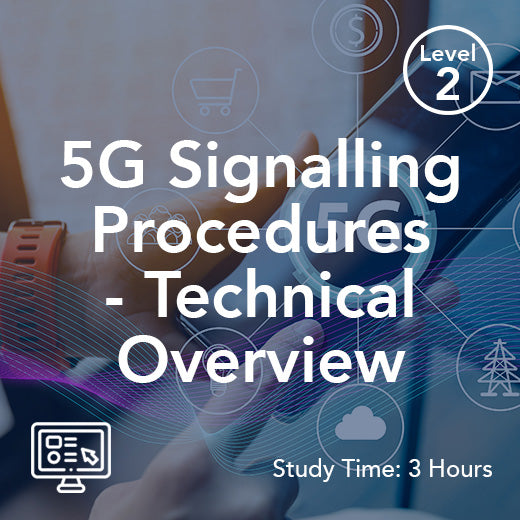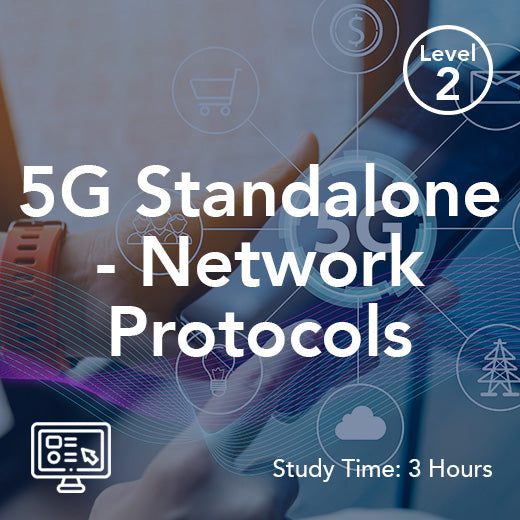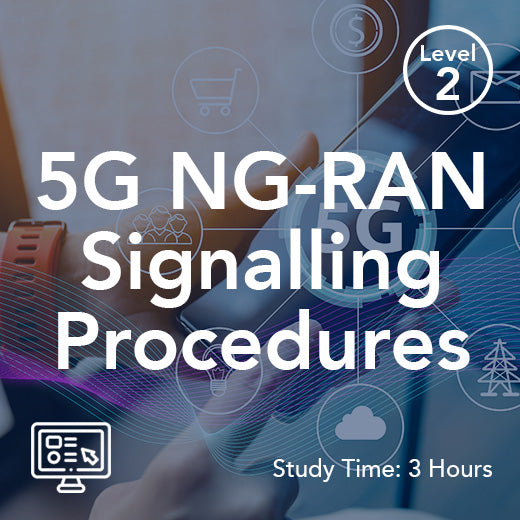What Is A Mobile Virtual Network Operator (Mvno)?
- , by Stephanie Burrell
- 20 min reading time
Mobile Virtual Network Operators, or MVNOs, represent a fascinating segment of the telecommunications industry and the broader telecom sector, offering a unique alternative to traditional mobile network providers. Unlike the big players who own and maintain their infrastructure, MVNOs lease network access from these operators and provide mobile services to customers under their own brand. This business model allows MVNOs operational flexibility and market differentiation, enabling them to compete effectively with established providers. This arrangement can often lead to more competitive pricing and tailored service plans, making MVNOs a compelling choice for savvy consumers. In this guide, we’ll demystify the concept of MVNOs, explore the benefits and drawbacks to creating an MVNO for your business and finally explore the issues relating to litigation if it all goes wrong. As some background, the executives at Wray Castle have been involved in the formation and launch of some of the world’s most successful MVNOs, highlighting the importance of a successful launch process, and in some of the highest profile international litigation involving MVNO agreements since 2002.
What is an MVNO?
Definition and Basics
An MVNO, or Mobile Virtual Network Operator, is a type of mobile service provider that does not own the wireless network infrastructure over which it provides services to its customers. Instead, an MVNO enters into a business agreement (typically called an MVNO agreement) with a traditional mobile network operator to gain wholesale access to their network; MVNOs lease network access from these operators, typically through bulk access agreements at wholesale or discounted rates. In the vast majority of cases, MVNO agreements are commercial agreements, although in some countries the national regulatory authority (NRA) mandates the interconnection of licensed MVNOs. This allows the MVNO to offer mobile services— such as voice, data, SMS, and wireless service — under its own brand, providing its own billing systems and customer care whilst utilising the host mobile operators network infrastructure (towers and masts). MVNOs can differentiate themselves by creating unique service plans, competitive pricing, or niche services tailored to specific customer needs without the need to own and operate their own network. MVNOs set their own retail prices and can compete on price as well as service features. They often cater to markets underserved by the larger network operators, providing flexibility and customer service that some might not find elsewhere. Depending on their market positioning network operators (MNOs) can view MVNOs either as unwelcome competition, or as a high margin wholesale opportunity. In any given market, in total MVNOs tend to gain around 10-15% market share. A very successful MVNO may itself gain around 5% market share.
How MVNOs Operate
MVNOs operate by purchasing wholesale access to a mobile network operator’s infrastructure. This means they do not need to invest in expensive network equipment or spectrum licenses, allowing them to focus on customer service and marketing. Typically MVNO agreements between host MNO and MVNO charge the MVNO per unit of consumption at a wholesale rate, the MVNO makes it margin by charging the end user a higher rate. Although in reality the situation is much more complex and dynamic as retail offers are constantly changing. In particular the tend towards ‘all inclusive’ monthly packages means that it is difficult for MNOs and MVNOs to agree a representative per minute or per MB of data rate that is fair to both parties. This issue and the associated anti competitive phenomena known as a ‘margin squeeze’ often gives rise to disputes between MVNO and host MNO. MVNOs also negotiate for sufficient network capacity to ensure reliable service delivery and support customer growth.
Although they rely on the infrastructure of a main network operator, MVNOs control billing, customer service to offer differentiated customer care, manage sim card distribution in major cities, operate value added services platforms and maintain their own independent brand. They offer unique plans and services utilising their own sim cards, often targeting niche markets or specific customer needs, such as no-contract deals, prepaid options or international calling. By operating in this manner, MVNOs can quickly adapt to market changes, providing flexibility in their offerings. This operational model allows them to serve both existing and new customers seeking alternatives to traditional mobile network providers, often with a focus on cost savings or specialised service options. MVNOs take certain operational support services from their host MNO, for example anything related to the core network infrastructure, RAN (radio access network), network infrastructure and its technical operations will be managed by the host MNO. MVNOs may utilise the services of MVNEs (mobile virtual network enablers) to provide services on their behalf ultimately to the MVNO’s own customers. MVNEs help MVNOs achieve operational efficiency and manage connectivity, enabling quick market entry and reliable service delivery.
Key Players in the MVNO Market
Virgin Mobile UK is generally recognised as the first MVNO, although there is some debate as to whether T-Mobile (UK)’s support of Utility Warehouse actually constitutes the first MVNO. However, this debate rather misses the point that effectively MVNOs trace their origins back to the service provider model created to encourage competition when the original TACS analogue mobile telephony licenses were granted in the UK in 1982. Some of the most successful MVNOs are operated by existing well-known brands to leverage their existing consumer base and assets. In many cases, these MVNOs act as branded resellers, using their brand name and extensive distribution channels, such as retail outlets and partner networks, to reach customers efficiently. Good examples include supermarkets such as Tesco Mobile in the UK, which is a joint venture partnership with O2, and Asda Mobile, which operates on Vodafone’s network. Supermarkets like Tesco Mobile utilize their existing customers to grow their MVNO business by promoting mobile services to shoppers already loyal to their brand. Other significant players specialise in niche markets, focusing on cost-effective plans without extras, such as Giffgaff, which is actually a wholly owned subsidiary of Telefonica O2 and uses their infrastructure. These MVNOs often appeal to consumers looking for straightforward, budget-friendly options. Additionally, some MVNOs target specific demographics or offer unique features such as providing low-cost international calling options. A good example is Lebara Mobile, which the executives at Wray Castle originated and negotiated the original MVNO agreement with Vodafone UK on Lebara Mobile’s behalf in 1996-1997. Lebara Mobile UK still operates on the network of mobile operator Vodafone UK .com
and has been a great success story. These players have carved out their niches by providing tailored services that cater to the unique needs of their target audiences. MVNOs reach consumers not only through physical distribution channels but also via their website, which serves as a key platform for customer support, promotion, and SIM card sales. By understanding the key players in the MVNO market, consumers can better evaluate which provider aligns with their preferences and requirements.
Types of MVNOs
As the MVNO market has evolved, so too have the business models and operational approaches of mobile virtual network operators. Not all MVNOs are created equal—some take on more technical and operational responsibilities, while others focus primarily on branding and customer relationships. Understanding the different types of MVNOs is key for businesses considering entering the mobile services market, as well as for consumers looking to choose the right provider.
Light vs. Full MVNOs
Mobile virtual network operators can generally be divided into two main categories: Light MVNOs (often called Service Provider MVNOs) and Full MVNOs. The distinction between these types lies in how much of the mobile service operation they control and the extent of their reliance on the underlying network infrastructure provided by major network operators.
Light MVNOs are typically focused on building their own brand, managing customer care, handling billing, and driving marketing and sales. They offer mobile services under their own name but depend heavily on the host mobile network operator for core network infrastructure and technical operations. Light MVNOs do not own or manage the core network elements—such as switching, authentication, or number management—and often partner with a Mobile Virtual Network Enabler (MVNE) to handle these technical aspects. This model allows Light MVNOs to keep operational costs low, making it an attractive option for smaller MVNOs or brands looking to enter the market quickly without significant investment in technology. However, this reliance on the host network means Light MVNOs have less control over the technical side of their services and may be limited in how much they can differentiate their offerings.
Full MVNOs, on the other hand, take a much more hands-on approach. While they still lease access to the radio access network (RAN) from a major network operator, Full MVNOs manage their own core network infrastructure, including switching, SIM management, number allocation, and value added services. This gives them greater flexibility to design and deliver unique mobile services, control pricing, and introduce innovative value added services that set them apart in the market. Full MVNOs can also manage their own roaming agreements and have more direct control over customer data and service quality. The trade-off is that Full MVNOs face higher operational costs and require a greater investment in technology and management. However, this investment can pay off through increased revenue opportunities and a stronger, more differentiated brand presence.
The choice between becoming a Light MVNO or a Full MVNO depends on a variety of factors, including business strategy, available resources, and the level of control a company wants over its mobile services. Some brands may start as Light MVNOs to test the market and later transition to a Full MVNO model as they grow and seek more control. Others may find that the Light MVNO approach is sufficient for their goals, especially if they are targeting niche markets or leveraging existing customer relationships.
Major network operators play a crucial role in this ecosystem, providing the underlying network infrastructure and wholesale rates that make MVNO services possible. By partnering with MNOs, both Light and Full MVNOs can access high-quality network services without the need to build their own physical networks.
In today’s dynamic MVNO market, there is a growing trend towards Full MVNOs, as they offer more flexibility and the ability to deliver highly customized services. However, Light MVNOs remain a vital part of the landscape, particularly for smaller brands or those looking to minimize operational costs. Ultimately, the success of any mobile virtual network operator—whether Light or Full—depends on understanding the needs of their target market, delivering high-quality mobile services, and finding the right balance between control, cost, and innovation.
Benefits of Choosing an MVNO
Cost Savings and Value
One of the primary benefits of choosing an MVNO is the potential for significant cost savings and added value. Since MVNOs do not bear the high costs associated with maintaining network infrastructure, they can pass these savings on to their customers. This often translates into lower monthly bills compared to traditional mobile network operators. MVNOs typically offer more flexible plans, including pay-as-you-go options, which can be ideal for those who do not require a lot of data or have varying usage patterns. Additionally, some MVNOs offer special promotions or discounts, further enhancing their value proposition. They cater to diverse needs, from budget-conscious users to those seeking specific services, such as international calling. By choosing an MVNO, consumers can enjoy competitive pricing without compromising on the quality of service, making these operators an attractive option for those looking to maximise their mobile service value.
Flexibility and Customisation
MVNOs are renowned for offering flexibility and customisation in their service plans, catering to a wide range of consumer needs. Unlike traditional mobile network operators, MVNOs provide a variety of plan options that can be tailored to individual usage patterns and preferences. Consumers can often find plans that include only the services they require, such as data-only packages or voice-focused plans, without unnecessary extras. This customisation allows users to pay only for what they need, avoiding the typical constraints of rigid, one-size-fits-all contracts. Furthermore, many MVNOs offer no-contract or month-to-month plans, providing the freedom to switch providers or adjust plans as needs change. This flexibility is particularly beneficial for those with fluctuating usage or who prefer not to be tied to long-term commitments. By choosing an MVNO, consumers can enjoy a bespoke mobile experience that aligns with their specific requirements and lifestyle.
Wide Range of Options
When choosing an MVNO, consumers are presented with a wide range of options that can accommodate various preferences and needs. The MVNO market is diverse, with operators offering specialised plans that target different demographics and usage patterns. For instance, some MVNOs focus on providing affordable international calling rates, making them ideal for expatriates or those frequently communicating with family abroad. Others concentrate on data-heavy plans for users who primarily use their phones for internet access and streaming. There are also MVNOs that cater to eco-conscious consumers by offering services that support sustainable practices. Furthermore, MVNOs often provide options for both prepaid and postpaid plans, allowing consumers to choose how they prefer to manage their mobile expenses. This extensive variety ensures that nearly everyone can find a plan that fits their lifestyle and budget. By opting for an MVNO, consumers can enjoy a personalised mobile experience with the flexibility to choose the features most important to them.
How MVNOs Differ from MNOs
Infrastructure and Technology
The primary distinction between MVNOs and Mobile Network Operators (MNOs) lies in infrastructure ownership and technology deployment. MNOs own and maintain the network infrastructure, including cell towers, spectrum licences, and data centres, which require substantial investment and resources. They are responsible for building, operating, and upgrading these networks to ensure coverage and quality of service. In contrast, MVNOs do not own any network infrastructure. Instead, they lease access to MNOs’ networks, allowing them to provide mobile services without the financial burden of infrastructure maintenance. Group identifiers (GIDs) stored on SIM cards play a crucial role in mobile networks by helping manage subscriber connectivity, define service profiles, and apply specific network settings or permissions within the mobile network infrastructure. This arrangement enables MVNOs to focus on customer service, marketing, and crafting unique service plans. While MVNOs rely on MNOs for network quality and coverage, they have the flexibility to innovate in service offerings and customer interactions. This model allows MVNOs to provide competitive options by leveraging the existing technology of established networks, often resulting in cost-effective and customised services for consumers.
Pricing Models and Plans
MVNOs and MNOs differ significantly in their pricing models and plans. MNOs often offer standardised plans with fixed prices, which may include bundled services such as data, voice, and SMS. These plans typically come with long-term contracts, which can be less flexible for consumers whose usage patterns change over time. In contrast, MVNOs leverage their lower operational costs to provide more diverse and flexible pricing models. They often offer a range of prepaid and no-contract options, allowing consumers to pay only for what they use. MVNOs may also provide specialised plans catering to specific needs, such as data-only plans for heavy internet users or affordable international calling packages. This flexibility allows consumers to customise their mobile service to better fit their usage and budget. By choosing an MVNO, consumers can benefit from competitive pricing and more adaptable plans, making it easier to find a service that aligns with their unique requirements.
Customer Service Experience
The customer service experience can vary greatly between MVNOs and MNOs. MNOs, due to their larger scale, often have extensive customer service operations, which can lead to longer wait times and less personalised service. Their focus on maintaining and upgrading infrastructure can sometimes detract from individual customer interactions. Conversely, MVNOs typically place a strong emphasis on customer service as a key differentiator. Without the burden of network maintenance, MVNOs can allocate more resources to ensuring a positive customer experience. They often provide more personalised and responsive service, with shorter wait times and dedicated support teams. This focus on customer satisfaction can lead to higher levels of consumer loyalty and positive word-of-mouth. Additionally, MVNOs may offer innovative customer service solutions, such as online chat support or flexible service adjustments, making it easier for customers to manage their accounts. This enhanced customer service experience is a significant advantage of choosing an MVNO over a traditional MNO.
Choosing the Right MVNO for You
Assessing Your Mobile Needs
Before choosing an MVNO, it's essential to assess your mobile needs to ensure you select the most suitable provider and plan. Start by evaluating your usage patterns: consider how much data, voice minutes, and text messages you typically use each month. Do you primarily use your phone for internet browsing and streaming, or is it more for calls and texts? Additionally, think about your budget and whether you prefer a prepaid plan or a postpaid option. If you make frequent international calls, look for an MVNO that offers affordable international rates. Also, consider whether you need a plan without a contract, providing the flexibility to switch providers if your needs change. By thoroughly understanding your mobile habits and financial constraints, you can narrow down the MVNO options to those that best align with your requirements, ensuring a tailored and cost-effective mobile experience.
Comparing MVNO Offers
Once you've assessed your mobile needs, the next step is to compare MVNO offers to find the best match. Start by researching different MVNOs and their plans, focusing on elements like data allowances, voice minutes, and text message limits. Look for providers that offer plans tailored to your usage patterns. Pay attention to any additional features or perks, such as free international calls or data rollover options. It's also essential to compare pricing structures, noting any potential hidden fees or costs associated with exceeding plan limits. Customer service quality can be a deciding factor, so read reviews and consider the level of support offered by each MVNO. Additionally, check coverage maps to ensure the MVNO uses a network that provides reliable service in your area. By methodically comparing these factors, you can make an informed decision and choose an MVNO that offers the best value and service for your specific needs.
Tips for Switching Providers
Switching to an MVNO can be straightforward if you follow a few essential tips. First, check if your current phone is compatible with the new provider's network; most MVNOs use SIM cards, so a phone that is unlocked and supports SIM cards should work. Next, obtain your PAC (Porting Authorisation Code) from your current provider if you wish to keep your existing phone number. This code allows you to transfer your number to the new MVNO seamlessly. Before making the switch, review any termination fees or contract obligations with your current provider to avoid unexpected charges. When you sign up with the new MVNO, ensure your new plan covers all your needs and confirm the activation process. Finally, make a backup of your contacts and important data in case there are any issues during the transition. By following these steps, you can switch providers smoothly and start enjoying the benefits of your new MVNO plan.
Future of MVNOs
Trends in the MVNO Industry
The MVNO industry is experiencing several key trends that are shaping its future. One notable trend is the increasing focus on niche markets, as more MVNOs tailor their offerings to specific consumer groups, such as seniors, students, or expatriates. This specialisation allows MVNOs to differentiate themselves and attract dedicated customer bases. Additionally, technological advancements, like the rollout of 5G networks, are enabling MVNOs to offer enhanced services and improved performance, making them more competitive against traditional MNOs. MVNOs are also expanding their operations across multiple countries, adapting to different regulatory environments and market conditions to increase their geographical reach and market share. Another trend is the rise of digital-first MVNOs that prioritise online customer interactions and self-service options, providing greater convenience and efficiency for tech-savvy users. Sustainability is also becoming a priority, with some MVNOs adopting eco-friendly practices and green initiatives to appeal to environmentally conscious consumers. These trends indicate a dynamic future for the MVNO industry, with operators continuously adapting to changing consumer preferences and technological developments to remain relevant and competitive.
Innovations in Mobile Services
Innovations in mobile services are driving change in the MVNO sector, enhancing the customer experience and expanding service offerings. One significant innovation is the integration of artificial intelligence (AI) and machine learning to improve customer service and personalise user interactions. AI-powered chatbots and virtual assistants are becoming commonplace, enabling efficient, round-the-clock support and tailored recommendations based on user behaviour. Additionally, MVNOs are leveraging data analytics to better understand customer needs and optimise their offerings, ensuring they remain competitive. The rise of eSIM technology is another innovation, allowing users to switch providers without changing physical SIM cards, thus simplifying the process of trying new services. Furthermore, MVNOs are exploring partnerships with tech companies to offer bundled services, such as streaming subscriptions or smart device integrations, adding value to their core mobile offerings. MVNOs are also increasingly providing content services and other services, such as apps and differentiated digital offerings, to enhance customer experience and stand out in the market. By introducing value added service options beyond basic connectivity, MVNOs are able to further differentiate their offerings and attract a broader customer base. These innovations are setting the stage for a more dynamic and user-centric MVNO industry, poised to meet the evolving demands of modern consumers.
Potential Challenges Ahead
While the MVNO industry is poised for growth, it also faces several potential challenges. One major concern is the dependency on MNOs for network access, which can limit MVNOs’ control over pricing and service quality. Should MNOs alter their pricing models or network access policies, MVNOs could face increased costs or restrictions, impacting their competitiveness. Additionally, the rapid pace of technological advancements, such as the transition to 5G, requires MVNOs to invest in upgrading their offerings to avoid falling behind. This can be resource-intensive, particularly for smaller operators. Different MVNO models, such as reseller MVNO and service provider MVNO, each face unique operational and market challenges due to their varying levels of independence and control over services. The increasing competition within the MVNO market itself poses another challenge, as new entrants constantly seek to capture market share with innovative services and aggressive pricing. To succeed, MVNOs must continuously adapt and differentiate their offerings to maintain customer loyalty. By proactively addressing these challenges, MVNOs can position themselves to thrive in an ever-evolving telecommunications landscape.

































